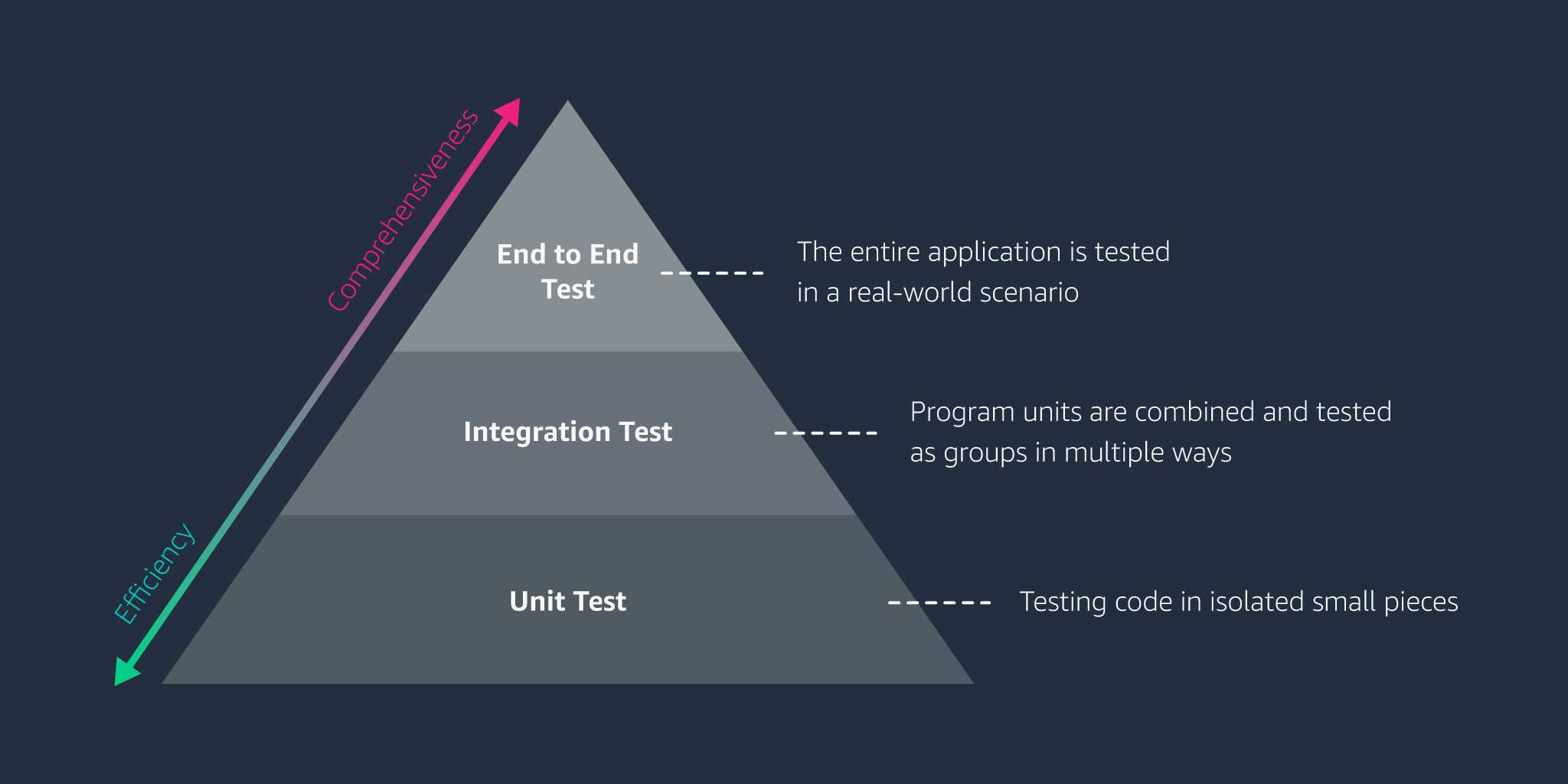Unit Testing
Use Unit Tests to test the smallest pieces of your code - units.
What Is Unit Testing
Unit testing is a way to test units - the smallest components of your software, the smallest piece of code. A unit can be a single function. The goal is to validate that each unit performs as it should. A unit test tests a behavior in isolation to other tests. If the test relies on an external system, it is not a Unit Test. Unit Tests should be written during the design phase, prior to implementation to prevent defects from being deployed to production. They should be run every time the code is changed and provide a clear description of the feature being tested.
Unit Test coverage is a subtype of Code Coverage - it shows which lines of code were tested by Unit Tests. However, the goal is not to have a 100% Unit Test coverage. In fact, you should have as few Unit Tests as possible and cover as many types of behavior as possible. 100% Unit Test coverage exists only in a perfect world. While writing Unit Tests focus on behaviors - adding new tests just to improve coverage leads to tests without any purpose and you would be just wasting your time.
Unit Testing can be done manually but it is usually automated. In terms of automated tests, there is a concept called the test pyramid that shows how to efficiently balance the automated tests.
 Source: Amazon Alexa: Unit Testing: Creating Functional Alexa Skills
Source: Amazon Alexa: Unit Testing: Creating Functional Alexa Skills
-
Unit Test Unit Tests typically test functions, methods, and classes. They are short, cheap and fast to write and maintain. They are focused on one thing/function. They are not dependent on any external systems. When a Unit Test fails, it is easy to identify the problem. There are two types of Unit Tests:
- Positive Testing - testing the code by giving valid data.
- Negative Testing - testing the code by giving the Invalid data.
-
Integration Test Integration test focuses on the point where individual units are combined and tested as a group. The purpose is to test if the interaction between units works.
-
End to End Test End to end tests cover the whole application - from start to finish. They are more expensive and slower to run.
The pyramid shows you that the more high-level you get, the fewer tests you should perform. Write a lot of small and fast Unit Tests, some integration tests and just a few high-level tests. To maintain this balance, use continuous delivery - a practice where you automatically ensure your product is ready to be released into production.
Why You Might Want the Unit Testing
Unit Testing helps you with:
- maintaining your code
- catching defects introduced due to the code change
- lower the potentially harmful impact of changes to your code
- reusing the code
- faster development
- lowering the cost of fixing defects on lower testing level
- a code documentation because the Unit Tests describe what your product does
Problems the Unit Testing Solves
- Poor code quality
- Increased cost
- Meaningless work
- Demotivated team
- Bad Product-Market Fit
- Demotivated Team
- Unsuccessful Product
- Unhappy Clients
How to Implement the Unit Testing
- Find a tool or a framework suitable for your programming language. For example:
- Focus on the behaviors of the tested system.
- The Unit Test name should explain what was tested.
- Perform Unit Tests continuously and frequently.
Unit Testing Best Practice:
- Arrange Set up the test. Make mocking tests for isolationg the behavior. Use inversion of control. For more information, see DZone: Unit Testing 101: Inversion Of Control.
- Act Run the function and run the test.
- Assert Check if the expected behavior occurred.
Common Pitfalls of the Unit Testing
- The developer tries to reach 100% Code Coverage and some of the tests are useless.
- There are more Unit Tests covering the same behavior.
- The developer tests the code written by somebody else.
- Unit Tests are mistaken with integration tests.
Resources for the Unit Testing
Was the article helpful?
Want to write for DXKB?
Feel free to contribute. People from DXKB community will be more than happy.
Prokop Simek
CEO
Related articles
ALL ARTICLES
Smoke Testing
It is a test aimed to verify that the most important features of the product really work. This term was used during testing hardware and the product passed the test when it did not burn or smoke.
Read morePilot Project
A Pilot Project is a small-scale version of your larger project that helps you catch potential errors before the full implementation.
Read morePenetration Testing
Penetration Tests are performed to identify network security weaknesses. It is a "friendly cyberattack" for spotting flaws and potential vulnerabilities.
Read moreProper Bug Reporting
Proper bug reporting is a crucial practice for development. It helps to understand where the product lacks its functionality or performance. Bug reports are descriptions of bugs found by testers.
Read moreCode Coverage
Code Coverage measures the percentage of source code lines that are covered by automated tests. If you have 90% CC, it means that 10% of the source code is not being tested at the moment.
Read moreALL ARTICLES
Contribution
We are happy you want to contribute to DXKB. Please choose your preferred way